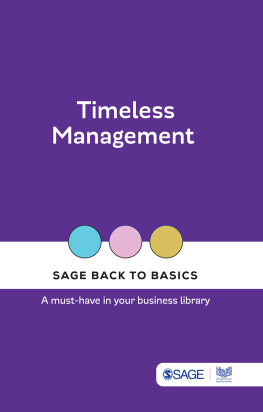Collection Management Basics

Collection
Management Basics

Seventh Edition
Margaret Zarnosky Saponaro and G. Edward Evans
Library and Information Science Text Series

Copyright 2019 by Margaret Zarnosky Saponaro and G. Edward Evans
All rights reserved. No part of this publication may be reproduced, stored in a retrieval system, or transmitted, in any form or by any means, electronic, mechanical, photocopying, recording, or otherwise, except for the inclusion of brief quotations in a review, without prior permission in writing from the publisher.
Library of Congress Cataloging-in-Publication Data
Names: Evans, G. Edward, 1937 author. | Saponaro, Margaret Zarnosky, author.
Title: Collection management basics / Margaret Zarnosky Saponaro and G. Edward Evans.
Other titles: Developing library and information center collections
Description: Seventh edition. | Santa Barbara, California : Libraries Unlimited, an Imprint of ABC-CLIO, LLC, [2019] | Series: Library and information science text series | Includes bibliographical references and index.
Identifiers: LCCN 2019000144 (print) | LCCN 2019002709 (ebook) | ISBN 9781440859656 (ebook) | ISBN 9781440859649 (pbk. : alk. paper)
Subjects: LCSH: Collection management (Libraries) | LibrariesSpecial collectionsElectronic information resources.
Classification: LCC Z687 (ebook) | LCC Z687 .E918 2019 (print) | DDC 025.2/1dc23
LC record available at https://lccn.loc.gov/2019000144
ISBN: 978-1-4408-5964-9 (paperback)
978-1-4408-5965-6 (ebook)
23 22 21 20 19 1 2 3 4 5
This book is also available as an eBook.
Libraries Unlimited
An Imprint of ABC-CLIO, LLC
ABC-CLIO, LLC
147 Castilian Drive
Santa Barbara, California 93117
www.abc-clio.com
This book is printed on acid-free paper 
Manufactured in the United States of America
We wish to dedicate this edition
to all the students,
who will begin developing the collections of the future,
and their instructors who will assist them in their learning.
As a personal dedication:
to the young readers Katie Saponaro and Ezra Harrington

Contents


Illustrations

Figures
Tables

Preface

The first edition of this title (originally called Developing Library and Information Center Collections) was published in 1979. Since that time, the manner and method of collection management has radically changed in libraries of all types with some of that change occurring as we prepared this text. Despite this radical change, collections remain an essential component of library operations. In this current age of diverse and clashing opinions, library collections continue to facilitate the unbiased, open exchange of ideas and information. A balanced collection means a person can access varying points of view either alone or with others without a real concern that hostility may arise. For example, as suggested by one of our Advisory Board members, Wendy Bartlett, in a public library setting, newspapers are a very important source as readers have been known to engage in lively discussions about sports or local politics after reading the copy available at the libraryshowing the community-building effect these resources can cultivate.
With this framework in mind, the chapters in this text are grouped to cover the background and process of collection management from start to finish, as well as addressing special issues in collection management. The first three chapters provide the reader with the foundations of collection management, its history and philosophy, as well as intellectual freedom and personal bias in selection. Beyond these introductory chapters, we next focus on policies, user needs assessment, and selection activities. Recognizing the important role technical services plays in the collection management process, we have added a new chapter exploring core technical services functions and workflows. After addressing methods to assess the collection, the remainder of the text focuses on special issues of concern for collection management practitioners, including collaborative collection development, material types, preservation, and legal issues. Each chapter includes sidebars with suggested resources, issues to watch, points to ponder, and the like.
This work would not have been possible without the contributions of a great number of individuals. We are especially grateful for the comments, suggestions, and insight of our three Advisory Board members, who all brought a unique perspective and insight to the work: Wendy K. Bartlett, Collection Development and Acquisitions Manager, Cuyahoga County Public Library, Parma, OH; Holland Christie, Branch Manager, Battle Ground Community Library, Vancouver, WA; and Susan Koutsky, Media Specialist, Westover Elementary School, Montgomery County Public Schools, Silver Spring, MD. You will see some of their many contributions to this work appearing throughout the text as From the Advisory Board sidebars.
We would also like to extend a very special thanks to Leigh Ann DePope, Head, Acquisitions & Data Services; Daniel Mack, Associate Dean, Collection Strategies and Services; Carla Q. Montori, Head, Preservation; and Celina Nichols McDonald, Government Documents & Criminology Librarian at the University of Maryland Libraries for their assistance. The input of each of these individuals greatly improved the manuscript. However, they are not responsible for errors in content.
Margaret Zarnosky Saponaro
Rockville, MD
G. Edward Evans
Flagstaff, AZ

Introduction

The goal of any collection development organization must be to provide the library with a collection that meets the appropriate needs of its client population, within the limitations of its fiscal and personnel resources.
Bonita Bryant, 1987
Much of the literature on library collections and access to information focuses on academic libraries.... There are some similarities between the challenges faced by academic libraries and public libraries.... The issues of concern are far-reaching and transcend traditional topics that collection development and management has included.
Next page


















